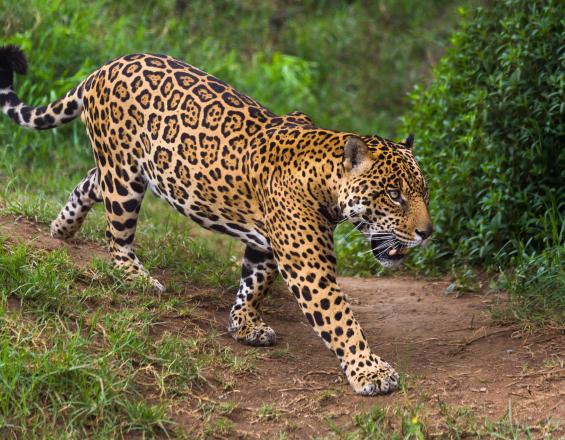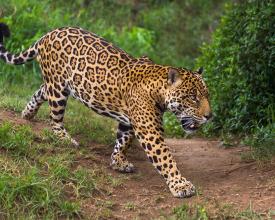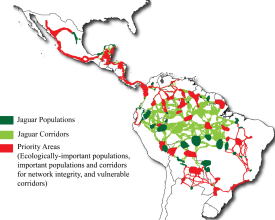
The Jaguar Corridor Initiative: A range-wide species conservation strategy

There are roughly 173,000 jaguar (Panthera onca) individuals left in the world today, with almost 90 per cent confined to Amazonia, especially in Brazil. Based on connectivity models, the species’ corridor range measures 2.6 million km2 for a total conservation network of 4.5 million km2. In order to focus research and conservation efforts across this vast network, jaguar populations and ecological corridors are prioritized using three criteria: ecological importance, network importance and corridor vulnerability. Through coarse-scaled GIS data and expert-derived resistance values, corridors were validated before conducting site-based conservation activities and strategies conducted by the federal to the individual landowner level. Activities include:
- Developing a local corridor council
- Working with hydroelectric companies to direct environmental mitigation and restoration projects toward areas of importance
- Providing science-based recommendations to development projects for maintaining connectivity across the corridor
Impacts
The Jaguar Corridor Initiative has provided a conservation blueprint across the species’ entire geographic range. Panthera is currently leading conservation efforts similar to those described for the Barbilla-Destierro Jaguar Corridor in 11 of the 18 countries where jaguars reside.
Support for the initiative has been steadily growing across jaguar range with the backing of numerous governments, landowners, corporations and scientists. With growing support, the vision of a connected and protected ecological network for jaguars from Mexico to Argentina hopefully will become reality.
Jaguar research is ongoing across the ecological network and further corridor monitoring plans are being established.




